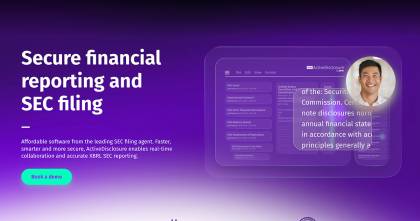Earlier this year, the SEC approved new requirements related to ESG reporting for publicly traded companies. The ruling, which was finalized on March 6, 2024, simplifies the scope of ESG reporting standards where climate disclosures are concerned.
Keep reading to discover what changes made it into the final SEC climate disclosure ruling, and what companies need to know about the changed rule from a reporting standpoint.
Key Changes from the Proposed Rule
Key changes to highlight include:
- GHG emissions scopes: Scope 3 disclosures have been eliminated from the final rule, and there is a new materiality threshold for Scopes 1 and 2.
- Greater flexibility for registered entities in determining Scope boundaries: With Scopes 1 and 2, entities now have greater flexibility to determine their organization's boundaries for GHG emissions, rather than the stricter standards that were originally part of the ruling.
- Phase-in timelines: The phase-in timelines have been extended.
- Exclusions from GHG reporting: The final rule excludes small and emerging companies from disclosures and attestations over GHG emissions.
- No line-by-line analysis in financial statements: The line-by-line analysis clause was removed, simplifying financial reporting requirements.
Climate Disclosure Requirements for Financial Statements
The SEC outlined several key climate disclosure requirements for financial statements. Under the new rule, companies need to incorporate footnotes within the financial statements disclosing:
1. The impact of severe weather conditions, such as sea level rise, flooring or hurricane damage:
- Income statements must explain aggregate losses or expenditures, up to a threshold of 1% of pretax income or loss of $100,000.
- Balance sheets must show aggregated costs relating to severe weather events, up to a threshold of 1% of stockholder equity of $500,000.
- Monies recovered due to insurance must be disclosed separately.
2. Carbon offsets and renewable energy:
- Companies must explain accounting methods used to determine renewable energy credits and carbon offsets.
- For each, companies must provide the starting and ending balances, amount expensed, amount capitalized, and any losses occurred.
3. Assumptions made:
- Companies must disclose how any severe weather impacted estimates and assumptions made to their transition plans or climate-related targets, vis-a-vis data reported in financial statements.
Disclosure Requirements Outside Audited Financial Statements
Climate disclosures outside the financial statements are not subject to audits. Instead, they will be subject to management’s disclosure controls and procedures.
In practical terms, this means that the company's principal executive officer and financial officer are each required to certify the veracity of information reported.
In early stages, large accelerated filers and accelerated filers will need to provide limited assurance for their Scope 1 and 2 greenhouse gas emissions requirements. After a phase-in period, this requirement is set to change to reasonable assurance.
Timeline for Implementation
The implementation timeline for SEC ESG disclosures varies by the type of filer and the type of information.
Large accelerated filers are required to report on their Disclosure and Financial Statement Effects Audit by the beginning of fiscal year 2025 in most cases, with select requirements phased in for the beginning of fiscal year 2026.
With GHG emissions, large accelerated filers are due to report on Scope 1 and Scope 2 GHG emissions by the beginning of fiscal year 2026, with limited assurance by the beginning of fiscal year 2029 and reasonable assurance by the beginning of fiscal year 2033.
Accelerated filers are required to report on their Disclosure and Financial Statement Effects Audit by the beginning of fiscal year 2026 in most cases, with select requirements phased in for the beginning of fiscal year 2027.
With GHG emissions, large accelerated filers are due to report on Scope 1 and Scope 2 GHG emissions by the beginning of fiscal year 2028, with limited assurance by the beginning of fiscal year 2031.
Accelerated filers do not need to provide reasonable assurance. Small, emerging, and non-accelerated filers have the fewest reporting requirements under the ESG final rule. For these entities, Disclosure and Financial Statement Effects Audit reporting is required by the beginning of fiscal year 2027, in most cases. These entities do not have to report on GHG emissions.
How Companies Can Get Ahead of ESG Reporting Now
While there is time to adapt to the SEC climate disclosure requirements, proper ESG data management can help you get ahead of reporting requirements, paving a path to timely implementation. Here are four steps to consider:
1. Determine Your Scope
The ESG final rule sets different timelines and disclosure requirements for companies based on their scope. If you do not already know it, you must start by determining your organization's scope. This is done by parsing the guidelines as they affect every department within the organization.
2. Review Sustainability Practices & Risks
Climate requirements extend far beyond SEC GHG reporting. They include a company's pollution, biodiversity and action steps the company is taking to mitigate or adapt to climate risks. Early review of risks, management strategies and board oversight will not only help your business report on these metrics, but it will also improve sustainability.
3. Assess Reporting & Data Management
Once your company has a better understanding of the rules and metrics, it's time to consider reporting and data management. The place to start is understanding what the requirements mean, developing practices for obtaining and managing data, and collecting data. Search for an ESG reporting solution that can handle reporting needs and scale alongside your business.
4. Update Strategic Approach & Educate Stakeholders
As compliance timelines near, worker responsibilities and roles may shift to accommodate implementation. Thinking ahead and communicating effectively will help your business get ahead of these changes. By starting early, your company can gain employee trust and buy-in, without leaving workers behind in the climate reporting transition.
Tracking the Final Climate Disclosure Ruling
Weeks after the new ESG rule was finalized, the Fifth Circuit U.S. Court of Appeals issued a stay, which temporarily blocked the ESG rule change implementation. The case was brought by a fracking company and an oilfield company that argued that the SEC was attempting to wade into climate politics when it had no standing to do so. This is not the only legal challenge to the ESG rule. Every challenge poses a potential delay to implementation.
Businesses that have watched the conversation around the ESG rule know that the final rule is diluted from what was originally proposed. Changes are most notable regarding the Scope 3 emissions of suppliers and end users, which were dropped from the rule altogether. While the outcome of litigation remains to be seen, we believe the smart course is to be proactive and anticipate that some form of ESG reporting will ultimately be required, even if we do not know when.
Take a proactive stance and begin early-stage preparations. Continue to monitor the issue, incorporating additional changes into your company's plans to avoid the hassle of playing catch-up later. During this stage, our ESG compliance checklist may be a helpful resource to have on hand.
The ESG rule change is complex. The key takeaways listed here represent a summary of the important information. Take the time now to understand the requirements and how to meet them, including what reporting software is needed, to position yourself to meet reporting requirements when they go into effect.


